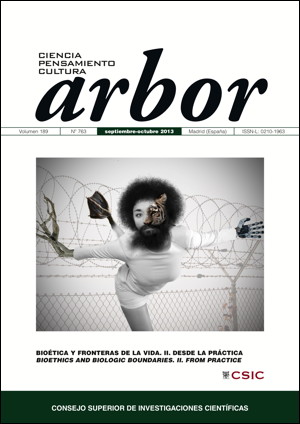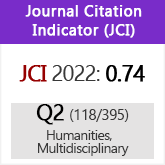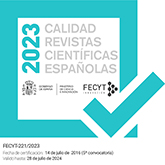Utopías dicotómicas sobre los cuerpos sexuados
DOI:
https://doi.org/10.3989/arbor.2013.763n5008Palabras clave:
Hermafroditismos, Intersexualidad, Disorders of Sex Development (DSD)/Anomalías de la diferenciación sexual (ADS), Diferenciación Sexual Atípica (DSA), Sexos/Géneros/SexualidadesResumen
Hermafroditas, intersexos, andróginos, transexuales u homosexuales simbolizan el lugar de la fisura, de la frontera, de la disidencia en relación a los cuerpos sexuados, los géneros y las sexualidades. Constituyen a su vez un espacio discursivo privilegiado desde donde recorrer algunas de las certezas que se han ido produciendo y reproduciendo desde los distintos campos de conocimiento y poder a lo largo de la historia de Occidente. El análisis de categorías médico-sociales como el “hermafroditismo”, la “intersexualidad”, o la más recientemente conocida como “DSD/ADS”, nos descubre un panorama complejo y a la vez controvertido, pero con el potencial suficiente para indagar en el carácter performativo de las categorías sociales. Además, nos permite adentrarnos en un debate bioético más amplio sobre los límites de las prácticas médicas, las cuestiones relativas al control y la normalización de cuerpos, o sobre la incorporación de nuevas tecnologías en la conformación de cuerpos e identidades.
Descargas
Citas
Álvarez de Gregori, C. (2001). Sobre la mutilación genital femenina y otros demonios. Barcelona: Universidad Autónoma de Barcelona.
Barbin, H.; Foucault, M.; Serrano, A. (1985). Herculine Barbin, llamada Alexina B. Madrid: Editorial Revolución.
Butler, J. (2001). El género en disputa. El feminismo y la subversión de la identidad. Barcelona: Paidós.
Butler, J. (2002). Cuerpos que importan. Sobre los límites materiales y discursivos del "sexo". Buenos Aires: Paidós.
Bradley S. J.; Oliver G. D.; Chernick A. B.; Zucker K. J. (1998). "Experiment of nurture: ablatio penis at 2 months, sex reassignment at 7 months, and a psychosexual follow-up in young adulthood". Pediatrics, vol. 102, nº1, pp. 1-5. http://dx.doi.org/10.1542/peds.102.1.e9
Cabral, M. (2003). Pensar la intersexualidad, hoy. En D. Mafia (Comp.), Sexualidades migrantes. Género y transgénero (pp. 117-127). Buenos Aires: Seminaria.
Cabral, Mauro (2005). "Cuando digo intersex: un diálogo introductorio a la intersexualidad". Cadernos Pagu, núm 24, pp. 283-284. http://dx.doi.org/10.1590/S0104-83332005000100013
Cabral, M. (2009). Interdicciones. Escrituras de la intersexualidad en castellano. Córdoba: Anarrés Ed.
Canals, J. (2002). El regreso de la reciprocidad. Grupos de ayuda mutua y asociaciones de personas afectadas en la crisis del Estado de Bienestar. (Tesis inédita de maestría o doctorado). Tarragona: Universitat Rovira i Virgili.
Carter, R. (1998). "The Murk Manual: How to Understand Medical Writing on Intersex". Chrysalis: The Journal of Transgressive Gender Identities, vol.2, nº 5, pp. 10 y 30.
Chase, C. (2005). "Hermafroditas con actitud: Cartografiando la emergencia del activismo político intersexual". En GTQ (Grupo de Trabajo Queer), El eje del mal es heterosexual. Figuraciones, prácticas y movimientos feministas queer (pp. 87-108). Madrid: Traficantes de Sue-os.
Cleminson, R.; Medina, R. M. (2004). "¿Mujer u hombre? Hermafroditismo, tecnologías médicas e identificación del sexo en Espa-a, 1860-1925". Dynamis, vol. 24. Universidad de Granada.
Cohen-Kettenis, P. T. (2005). "Gender Change in 46, XY Persons with 5α-Reductase-2 Deficiency and 17β-Hydroxysteroid Dehydrogenase- 3 Deficiency". Archives of Sexual Behavior, vol. 34, nº 4, pp. 399-410. http://dx.doi.org/10.1007/s10508-005-4339-4 PMid:16010463
Colapinto, J. (2001). As nature made him. The boy who was raised as a girl. New York: Harper Collins. PMid:11346300
Consortium on the Management of Disorders of Sex Development (2006). Clinical guidelines for the management of disorders of sex development in childhood. Recuperado de http://www.accordalliance.org/dsd-guidelines.html
Coventry (1999). "Finding the Words". En A. D. Dreger (Ed.), Intersex in the age of ethics (pp.71-8). Maryland: University Publishing Group.
De Gabriel, N. (2010). Elisa y Marcela. Espa-a: Libros del Silencio.
De Lauretis, T. (1989). Technologies of gender: Essays on theory, film, and fiction. London: MacMillan. PMid:2492357
Denny, D.; Chase, C.; Coventry, M. (Eds.). (1997-1998). "Intersex Awakening". Chrysalis: The Journal of Transgressive Gender Identities, vol. 32, nº5.
Dessens, A. B.; Slijper, F. M.; Drop, S. L. (2005). « Gender Dysphoria and Gender Change in Chromosomal Females with Congenital Adrenal Hyperplasia". Archives of Sexual Behavior, vol. 34, nº 4, pp. 389-397. http://dx.doi.org/10.1007/s10508-005-4338-5 PMid:16010462
Devore, H. (1999). "Growing up in the surgical maelstrom". En A. D. Dreger (Ed.), Intersex in the age of ethics (pp. 79-82). Maryland: University Publishing Group.
Diamond, M. (1965). "A Critical Evaluation of the Ontogeny of Human Sexual Behavior". The Quarterly Review of Biology, vol. 40, nº 2, pp. 147-175. http://dx.doi.org/10.1086/404539
Diamond, M. (1968). "Genetic-Endocrine Interactions and Human Psychosexuality". En M. Diamond (Ed.), Perspectives in Reproduction and Sexual Behavior. (pp. 417-443). Indiana: Indiana University Press.
Diamond, M.; Sigmundson, K. (1997a). "Management of intersexuality. Guidelines for dealing with persons with ambiguous genitalia". Archives of Pediatrics and Adolescent Medicine, vol. 151, nº 10, pp. 1046-1050. http://dx.doi.org/10.1001/archpedi.1997.02170470080015 PMid:9343018
Diamond, M.; Sigmundson, K. (1997b). "Sex Reassignment at Birth: A Long Term Review and Clinical Implications". Archives of Pediatrics and Adolescent Medicine, vol. 151, nº 10, pp. 298-304. http://dx.doi.org/10.1001/archpedi.1997.02170400084015 PMid:9080940
Dreger, A. D. (1998a). "A History of Intersexuality: From the Age of Gonads to the Age of Consent". En A. D. Dreger (Ed.), Intersex in the Age of Ethics. (pp. 5-23). Hagerstown: University Publishing Group.
Dreger, A. D. (1998b). Shifting the Paradigm of Intersex Treatment. Recuperado de http://www.isna.org/compare
Dreger, A. (1999). Intersex in the Age of Ethics. Maryland: University Publising Group.
Dreger, A.; Feder, E. K.; Tamar-Mattis, A. (2012). "Prenatal Dexamethasone for Congenital Adrenal Hyperplasia. An Ethics Canary in the Modern Medical Mine". Bioethical Inquiry, vol. 9, pp. 277-294. http://dx.doi.org/10.1007/s11673-012-9384-9 PMid:22904609 PMCid:PMC3416978
El Mundo (2006). La subcampeona de 800 metros es él. Recuperado de http://www.elmundo.es/elmundodeporte/2006/12/19/masdeporte/1166525963.html
El País (2006). Una atleta india pierde su medalla en los Juegos Asiáticos por las dudas sobre su sexo. Recuperado de http://deportes.elpais.com/deportes/2006/12/19/actualidad/1166516515_850215.html
Fausto-Sterling, A. (2006). Cuerpos sexuados. Barcelona: Melusina. PMid:17036697
Ford, K-K (2001). "'First, do no harm'—the fiction of legal parental consent to genital-normalizing surgery on intersexed infants". Yale Law Policy Rev., vol. 19, pp. 469-488. PMid:12755146
Foucault, M. (1985). Herculine Barbin llamada Alexina B. Madrid: Revolución. PMCid:PMC180245
Gallego, C. (2006). La construcción tecnosocial del sexo. (Trabajo de Investigación para Diploma de Estudios Avanzados). Universidad Complutense de Madrid.
García Dauder, S.; Romero, C. (2012). "Los desplazamientos políticos de las categorías médicas: Actores, discursos y relaciones en la controversia 'Disorders of sex development' versus 'Intersex". En E. Pérez Sede-o; R. Iba-ez (Coord.), Cuerpos y diferencias. (pp. 231-240). Madrid: Ed. Plaza y Valdés.
Garrido, C. (2009). ¿Padece Semenya el Síndrome de Insensibilidad Androgénica?. Recuperado de http://www.abc.es/20090918/sociedad-salud/semenya-200909161748.html
Ginnane, Maxx (2011). Too fast to be a woman?: The story of Caster Semenya. UK: BBC. Gracia Bouthelier, R. (2002). "Anomalías de la diferenciación genital". En Sociedad Espa-ola de Endocrinología Pediátrica (Ed.), Estados intersexuales e hipogonadismo. (pp. 83-93). Barcelona: J&C Ediciones Médicas.
Graham, S. (2006). The secret of my sex. Recuperado de http://www.independent.co.uk/life-style/health-and-families/health-news/the-secret-of-mysex-411032.html
Gregori, N. (2006). "Los cuerpos ficticios de la biomedicina. El proceso de construcción del género en los protocolos médicos de asignación de sexo en bebés intersexuales". AIBR, vol. 1, nº. 1. Recuperado de www.aibr.org/antropologia/01v01/articulos/010106.pdf
Gregori, N. (2008). "Sexos y deseos inapropiados". En A. Téllez y J. E. Martínez (Coords.), Sexualidad, género, cambios de roles y nuevos modelos de familia. (pp. 169-203). Elche: Ed. S.I.E.G.
Gregori, N. (en prensa). "'Llegar a ser' mujer/hombre desde un diagnóstico de intersexualidad o ADS". En E. Pérez Sede-o, E. Ortega (Eds.), Cartografías del cuerpo. Biopolíticas de la ciencia y la tecnología. Madrid: Cátedra.
Gregori, N.; Gallego, C.; García-Dauder, S. (2007). New management in intersex debates. Past, Present, Future: from Women´s Studies to Post-Gender Research, Umea University, 14-17 June.
Halifax Resolutions (2009). Halifax Resolutions. 5th World Congress on Family Law and Children's Rights. Halifax (Canada). Recuperado de www.lawrights.asn.au/previous-congress/5th-worldcongress/76-halifax.pdf
Hart, S. (2009). World Athletics: Caster Semenya tests 'show high testosterone level. Recuperado de http://www.telegraph.co.uk/sport/othersports/athletics/6078171/World-Athletics-Caster-Semenya-tests-show-high-testosterone-levels.html.
Hausman, B. (1998). "En busca de la subjetividad: transexualidad, medicina y tecnologías de género". En J. A. Nieto (Comp.), Transexualidad, transgenerismo y cultura. Antropología, identidad y género (pp.193-233). Madrid: Talasa.
Herdt, G. (1990). "Mistaken gender: 5-alpha-reductase hermaphroditism and biological reductionism in sexual identity reconsidered". American Anthropologist, vol. 92, pp. 433-446. http://dx.doi.org/10.1525/aa.1990.92.2.02a00110
Hines, M. (2004). "Psychological gender development in individuals born with ambiguous genitalia". En A. Balen, S. Creighton, M. C. Davies, J. MacDougall, R. Stanhope (Ed.), Paediatric and Adolescent Gynaecology. A Multidisciplinary Approach (pp. 492-508). Cambridge: Cambridge University Press.
Hines, M.; Ahmed, S. F.; Hughes, I. A. (2003). "Psychological outcomes and gender-related development in complete androgen insensitivity syndrome". Archives of Sexual Behaviour, vol. 32, nº 2, pp. 93-101. http://dx.doi.org/10.1023/A:1022492106974
Hines, M. (2011). "Prenatal endocrine influences on sexual orientation and on sexually differentiated childhood behavior". Frontiers in Neuroendocrinology, vol. 32, nº 2, pp. 170-82. http://dx.doi.org/10.1016/j.yfrne.2011.02.006 PMid:21333673 PMCid:PMC3296090
Hinkle, C. E. (2006). Intersex. The right to one's self. OII, Recuperado de www.intersexualite.org
Hurst, M. (2009). Semenya has male sex organs and no womb or ovaries. Recuperado de http://www.dailytelegraph.com.au/sport/semenya-has-no-womb-orovaries/story-e6frexni-1225771672245
Hutson, J. M.; Warne, G. L.; Grover, S. R. (2012). (Eds.). Disorders of Sex Development: An integrated approach to management. Verlag, Berlin, Heidelberg: Springer.
Karkazis, K.; Rossi, W. C. (2010). "Ethics for the Pediatrician. Disorders of Sex Development: Optimizing Care". Pediatrics in Review, vol. 31, nº 11, pp. 82-85.
Kessler, S. (1998). Lessons from the Intersexed. New Jersey: Rutgers University Press.
Kim (sin apellido) (1999). "As is". En A. D. Dreger (Ed.), Intersex in the age of ethics (pp. 99-100). Maryland: University Publishing Group.
Kipnis, K.; Diamond, M. (1999). "Pediatric Ethics and the Surgical Assignement of Sex". En A. D. Dreger (Ed.), Intersex in the age of ethics (pp.119-137). Maryland: University Publishing Group.
Lee, P. A.; Houk C. P.; Ahmed S. F.; Hughes, I. A. and The International Consensus Conference on Intersex Working Group (2006). Consensus statement on management of intersex disorders. Pediatrics, vol. 118, nº 2, pp. 488-500. http://dx.doi.org/10.1542/peds.2006-0738 PMid:16882788
Laqueur, T. (1994). La construcción del sexo. Cuerpo y género desde los Griegos hasta Freud. Madrid: Cátedra (Feminismos).
López Siguero, J. P. (2008). Síndrome de insensibilidad androgénica. Recuperado de http://grapsia.org/images/eventos/2008/sia_jpls.pdf
Lucio, C. V.; Ábrego, V. (2003). "Hermafroditismo verdadero, características clínicas, genotipo e histología gonadal". Medicina Universitaria, vol. 5, nº 20, pp. 176-179.
Mara-ón, G. (1928). "Nuevas ideas sobre el problema de la intersexualidad y sobre la cronología de los sexos". Revista de Occidente, vol. VI, nº LXVI, pp. 257-294.
Mara-ón, G. (1930). La evolución de la sexualidad. Los estados intersexuales. Madrid: Morata.
Marca (2009). Semenya es hermafrodita. Recuperado de http://www.marca.com/2009/09/11/atletis-mo/1252661927.html
Martínez, M. (2005). "Mi cuerpo no es mío. Transexualidad masculina y presiones sociales de sexo". En GTQ (Grupo de Trabajo Queer), El eje del mal es heterosexual. Figuraciones, prácticas y movimientos feministas queer (pp. 113-121). Madrid: Traficantes de Sue-os.
Martínez-Mora, J. (1994). Intersexual States. Disorders of Sex Differentiation. Barcelona: Doyma.
Martul, P. (2000). "Hipogonadismo: diagnóstico y tratamiento". Anales Espa-oles de Pediatría, vol. 52, nº. 1, pp. 59-62.
Mazur, T. (2005). "Gender dysphoria and gender change in androgen insensitivity or micropenis". Archives of Sexual Behavior, vol. 34, pp. 411-421. http://dx.doi.org/10.1007/s10508-005-4341-x PMid:16010464
Meyer-Bahlburg H. F. (1999). "Gender assignment and reassignment in 46, XY pseudohermaphroditism and related condition". The Journal of Clinical Endocrinoly and Metabolism, vol. 84, nº 10, pp. 3455-3458. http://dx.doi.org/10.1210/jc.84.10.3455
Meyer-Bahlburg, H. F. (2005). "Gender identity outcome in female-raised 46, XY persons with penile agenesis, cloacal exstrophy of the bladder, or penile ablation". Archives of Sexual Behavior, vol. 34, pp. 423-438. http://dx.doi.org/10.1007/s10508-005-4342-9 PMid:16010465
Meyer-Bahlburg, H. F.; Gruen, R. S.; New, M. I. et al. (1996). "Gender change from female to male in classical congential adrenal hyperplasia". Hormones and Behaviour, vol. 30, nº 4, pp. 19-32. http://dx.doi.org/10.1006/hbeh.1996.0039 PMid:9047260
Money, J. (1973). Prenatal hormones and postnatal socialization in gender identity differentiation. Nebraska Symposium on Motivation, pp. 221-295.
Money J. (1975). "Ablatio penis: normal male infant sex-reassigned as a girl". Archives of Sexual Behaviour, vol. 4, pp. 65-71. http://dx.doi.org/10.1007/BF01541887
Money, J. (1976). "Gender identity and hermaphroditism [letter]". Science, vol. 191, nº 4229, p. 872. http://dx.doi.org/10.1126/science.1251201
Money, J.; Ehrhardt, A. (1972). Man and Woman, Boy and Girl. Baltimore: Johns Hopkins University Press. PMCid:PMC1786954
Money, J.; Hampson, J. G. y Hampson, J. L. (1955). "Hermaphroditism: Recommendations Concerning Assignment of Sex, Change of Sex, and Psychological Management". Bulletin of the John Hopkins Hospital, vol. 97, pp. 284-300. PMid:13260819
Moreno, A. (1999). "In America they call us hermaphrodites". En A. D. Dreger (Ed.), Intersex in the age of ethics (pp. 137-140). Maryland: University Publishing Group.
Morris, S. G. (2006). "DSD and Identity". Archives of Disease in Childhood Online (Electronic Letter 22 August) Recuperado de http://adc.bmjjournals.com/cgi/eletters/91/7/554
Nieto, J. A. (2003). "La intersexualidad y los límites del modelo 'dos sexos/dos géneros'". En O. Guash; O. Vi-uales (Eds.), Sexualidades. Diversidad y control social (pp. 69-105). Barcelona: Bellaterra.
Parera, N. et al. (2001). "Manifestaciones clínicas de la pubertad en el varón y la mujer". En C. Buil; I. Lete; R. Ros; J.L. De Pablo (Coords.), Manual de salud reproductiva en la adolescencia. Aspectos básicos y clínicos (pp. 101-149). San Sebastián: Wyeth-Lederle.
Piro Biosca, C. (2002). "Estados intersexuales: tratamiento quirúrgico". En Sociedad Espa-ola de Endocrinología Pediátrica (Ed.), Estados intersexuales e hipogonadismo (pp. 129-140). Barcelona: J&C Ediciones Médicas.
Preves, S. (1998). "For the Sake of the Children: Destigmatizing Intersexuality". The Journal of Clinical Ethics, vol. 9, nº 4, pp. 411-418. PMid:10029842
Preves, S. (2003). Intersex and Identity. New Jersey and London: Rutgers University Press.
Puenzo, L. (2007). XXY. Argentina: Wanda Vision.
Reis, E. (2009). Bodies in Doubt. An American History of Intersex. Baltimore: The John Hopkins U.P.
Salamanca, A.; Nogales, F. (1998). "Hermafroditismo verdadero". En J. Botella; A. Fernández (Ed.), La evolución de la sexualidad y los estados intersexuales (pp. 271-279). Madrid: Díaz de Santos.
San Román, D. (2009). Habrá que disculparse ante la atleta, ante la federación y ante Sudáfrica. Recuperado de http://www.elmundo.es/elmundodeporte/2009/08/23/masdeporte/1251049697.html
Sánchez Planell, Ll. (1994). "Psychopathological disorders in intersexual states". En J. Martínez-Mora (Comp.), Intersexual States. Disorders of Sex Differentiation (pp. 369-379). Barcelona: Doyma.
Simmonds, M. (2006). "Was Variations of Reproductive Development considered?". Archives of Disease in Childhood Online, Electronic Letter, 17 August. Recuperado de http://adc.bmjjournals.com/cgi/eletters/91/7/554.
Sytsma, S. (2006). Ethics and Intersex. Nederlands: Springer. http://dx.doi.org/10.1007/1-4220-4314-7
Tamar-Mattis, A. (2008). "Medical decisionmaking and the child with a DSD". Endocrine Today, November 2008.
Vázquez, F.; Moreno, A. (1995). "Un solo sexo. Invención de la monosexualidad y expulsión del hermafroditismo (Espa-a, siglos XV-XIX)". Daimon. Revista de Filosofía, nº 11, pp. 95-112.
Vázquez, F.; Cleminson, R. (2010). "Subjectivities in transition: Gender and sexual identities in cases of 'sex change' and 'hermaphroditism' in Spain, c. 1500-1800". History of Science, nº 48, pp. 1-38.
Vázquez, F.; Cleminson, R. (2011). Los hermafroditas. Medicina e identidad sexual en Espa-a (1850-1960). Granada: Comares. You Magazine (10 de septiembre de 2009). Wow, look al Caster now!. nº 144, Cape Town, South Africa.
Wairimu Ngaruiya Njambi (2004). "Dualisms and female bodies in representations of African female circumcision: a feminist critique". Feminist Theory, vol. 5, nº 3, pp. 281-303. http://dx.doi.org/10.1177/1464700104040811
Williams, P.; Smith. M. (1980). Open Secret: The First Question. Science Series, BBC television production.
Wilson, J. D. (2001). "Androgens, androgen receptors, and male gender role behavior". Hormones and Behaviour, vol. 40, nº 2, pp. 358-366. http://dx.doi.org/10.1006/hbeh.2001.1684 PMid:11534997
Wilson, B.; Reiner, W. (1998). "Management of Intersex: A Shifting Paradigm". The Journal of Clinical Ethics, vol. 9, nº 4, pp. 360-370. PMid:10029837
Wiesemann, C.; Ude-Koeller, S.; Sinnecker, G. H.; Thyen, U. (2009). "Ethical Principles and Recommendations for the Medical Management of Differences of Sex Development (DSD)/Intersex in Children and Adolescents". Pediatrics, vol. 671, pp. 674-76.
Wong, W. I.; Pasterski, V.; Hindmarsh, P.; Geffner, M. E.; Hines, M. (2013). "Are There Parental Socialization Effects on the Sex-Typed Behavior of Individuals with Congenital Adrenal Hyperplasia?". Archives of Sexual Behaviour, vol. 42, nº 3, pp. 381-391. http://dx.doi.org/10.1007/s10508-012-9997-4 PMid:22810998
Zucker, K. J. (1999). "Intersexuality and gender identity differentiation". Annual Review of Sex Research, vol. 10, pp. 1-69. PMid:10895247
Zucker, K. J. (2005). "Measurement of Psychosexual Differentiation". Archives of Sexual Behavior, vol. 34, nº 4, pp. 375-388. http://dx.doi.org/10.1007/s10508-005-4336-7 PMid:16010461
Publicado
Cómo citar
Número
Sección
Licencia
Derechos de autor 2013 Consejo Superior de Investigaciones Científicas (CSIC)

Esta obra está bajo una licencia internacional Creative Commons Atribución 4.0.
© CSIC. Los originales publicados en las ediciones impresa y electrónica de esta Revista son propiedad del Consejo Superior de Investigaciones Científicas, siendo necesario citar la procedencia en cualquier reproducción parcial o total.Salvo indicación contraria, todos los contenidos de la edición electrónica se distribuyen bajo una licencia de uso y distribución “Creative Commons Reconocimiento 4.0 Internacional ” (CC BY 4.0). Puede consultar desde aquí la versión informativa y el texto legal de la licencia. Esta circunstancia ha de hacerse constar expresamente de esta forma cuando sea necesario.
No se autoriza el depósito en repositorios, páginas web personales o similares de cualquier otra versión distinta a la publicada por el editor.















